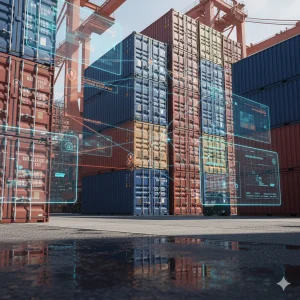In financial services, speed is a competitive edge; it’s a baseline expectation. Whether you’re a global bank, a digital lender, or a fast-scaling fintech, the ability to onboard new customers quickly can directly influence conversion rates, user experience, and market share. The faster a legitimate customer is verified and activated, the more likely they are to engage; stay.
However, speed can’t come at the cost of control. Amid growing regulatory scrutiny, increasing fraud attempts, and rising expectations for transparency, compliance teams are under pressure to deliver the diligence that’s fast and flawless. Across the US, UK, and Europe, regulators are making it clear: cutting corners is not an option.
Manual checks, disconnected systems, and one-size-fits-all screening approaches slow down the process and leave gaps in risk coverage. What’s needed today is an approach that builds compliance directly into onboarding flows, without compromising agility or customer experience.
Why Onboarding is Under More Pressure Than Ever
What used to take days or weeks now needs to happen in minutes. Customers expect a seamless digital experience, with minimal paperwork and maximum speed. But behind the scenes, compliance teams still have to verify identities, screen for risk, and meet regulatory obligations.
This is further complicated by;
- Cross-border operations, where different rules apply depending on geography and jurisdiction
- High-fraud activity, especially in digital channels with synthetic IDs and stolen credentials
- Complex ownership structures, which require enhanced due diligence
- Fierce competition, where delays in onboarding can lead to customer drop-off
Compliance teams must find ways to reduce friction while increasing risk visibility, often with fewer resources and tighter timelines.
The Risk of Rushing Unsecured Onboarding
Some organizations try to move faster by minimizing screening steps, bypassing manual reviews, or relying on outdated datasets. While this may appear efficient, it leaves critical gaps in your compliance program.
Without proper onboarding controls, businesses risk:
- Letting high-risk customers through the door, including sanctioned or politically exposed persons (PEPs)
- Missing early fraud indicators, like fake IDs, mismatched documents, or incomplete profiles.
- Failing regulatory audits, especially when documentation is weak or decisions can’t be explained
- Eroding trust, both with regulators and customers, once weaknesses and gaps come to light
Compliance isn’t a formality; it’s the foundation of sustainable growth. Cutting corners almost always costs more in the long run.
How to Accelerate While Being Compliant
The most successful companies aren’t just moving faster; they’re moving smarter. By embedding compliance tools into the onboarding process, they can maintain control, reduce delays, and scale their programs without needing to expand the team at the same pace.
Integrated Identification Verification at the Onset
Instead of treating KYC as a separate workflow, organizations are embedding real-time identity checks into the initial onboarding step. Document scanning, facial recognition, and data validation happen instantly, automating what once took hours and reducing the need for manual review, especially on low-risk cases.
Risk-Based Workflows for Smarter Screening
One-size-fits-all doesn’t work in compliance. A new customer applying for a personal loan in their home country shouldn’t be viewed the same way as a foreign corporate account. Risk-based workflows allow institutions to automatically apply deeper screening only when warranted, helping reduce workload without increasing risk.
Real-Time Sanctions, PEPs & RCAs Screening
Manual batch checks, outdated watchlists slow teams down and open up compliance gaps. Instead, real-time screening against global sanctions databases, PEP registries, and RCA relationships ensures teams receive immediate alerts when a risk in identified; before the account is activated.
Adverse Media Detection Without the Noise
Screening against global news sources is essential, but overwhelming when every vague mention triggers an alert. Advanced media monitoring tools use AI to detect relevant, credible risk events and categorize them by severity, helping teams focus on what actually matters.
Audit-Ready Documentation from Day One
From the moment a customer is onboarded, institutions must be able to prove that they followed the right steps. Platforms that automatically log decisions, timestamp actions, and store supporting data make it easier to pass audits, resolve investigations, and maintain internal accountability, without scrambling for records months later.
The Role of Technology in Getting it Right
Achieving both speed and compliance isn’t about doing more; it’s about using smarter tools that adapt to risk in real-time.
Modern compliance platforms are designed to:
- Automate repetitive tasks like ID verification and list screening
- Support flexible rules based on geography, product, or user type
- Integrate easily into existing onboarding flows via API
- Reduce manual reviews and false positives
- Improve accuracy and audit-readiness across all channels
Technology is what turns technology from a bottleneck into a business enabler, helping institutions move faster without losing sight of the risk.
Final Thoughts
Speed and compliance are often seen as opposites, but they don’t have to. With intelligent systems, automated risk detection, and configurable workflows, organizations can onboard legitimate customers faster while keeping bad actors out.
You don’t have to choose between fast and thorough. You can (and should) opt for a program that delivers both. Because in today’s compliance landscape, the real risk isn’t moving too fast; it’s falling behind.
Ready to Stay
Compliant—Without Slowing Down?
Move at crypto speed without losing sight of your regulatory obligations.
With IDYC360, you can scale securely, onboard instantly, and monitor risk in real time—without the friction.











